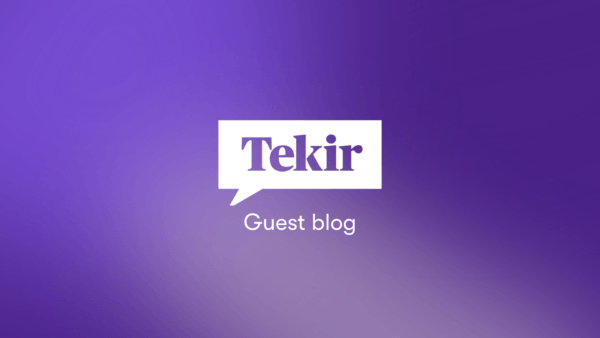
What is collaborative leadership and how can you practice it?
In the current era of work, effective leadership demands collaboration and inclusion at every level. To meet this requirement, a new model of leadership is required, namely, collaborative leadership. Collaborative leadership is also known as participative leadership and has roots in democracy. It has gained popularity over the past decade as an effective approach to leadership.
To create a diverse and inclusive workplace, millennials and Gen Z employees require open and transparent leaders. They tend to associate hierarchical leadership models with a lack of progressiveness and transparency. In this context, collaborative leadership is vital to promote inclusion, transparency, and progressiveness in the workplace.
If you’re wondering how to successfully practice this approach, this post can help you. We’ll answer what collaborative leadership means in the current workplace and how to overcome common challenges faced in this approach. With the right techniques and strategies, you can master the art of collaborative leadership and create a positive and productive work environment.
Grab our free template for 4D goal-setting and get started with co-creating team objectives.
What is collaborative leadership?
Collaborative leadership is a management practice where everyone is involved in making and shaping decisions that impact them. This is the opposite of traditional, top-down hierarchies that no longer suit today’s hybrid, purpose-led working world.
With collaborative leadership, everyone has a role in creating impact. All employees understand their part in the larger context, which allows them to feel the work they do is meaningful. When people feel included and valued in an organization, they’re more engaged and motivated to do great work.
How to practice collaborative leadership
Moving to a collaborative leadership model can be a big change for organizations that are used to the traditional, top-down approach. Here are some concrete steps you can take to start practicing collaborative leadership in your organization.
Create a safe space for open communication
There is no collaboration without communication. But making space for open and meaningful conversations in a hybrid workplace where employees are spread out across different countries and time zones can be challenging.
Collaborative organizations rely on online platforms to foster transparency and keep people connected. It’s important to create a safe environment free of distractions where you can invite people to contribute, ensure everyone’s voice is heard, and leverage all insights to make collective decisions. For example, KONE Corporation renewed its values with all 60,000 employees by enabling everyone to discuss and engage virtually through Howspace.
Involving the entire organization to build something together can be a transformative experience for everyone. It not only boosts engagement and loyalty but also helps execute whatever is being defined, like the organization’s strategy or values. People will feel ownership of what they have helped create and will want to see it come to life.
Show vulnerability
Vulnerability is a leadership strength, not a weakness. Being vulnerable as a leader means you don’t steer clear from difficult conversations—you have the courage to ask questions even if you might not like the answers. When you let go of control and put your ego aside, you can embrace curiosity, be open to other people’s ideas, and work together.
As Simon Sinek says, being vulnerable doesn’t mean you need to talk to your team like you would talk to your therapist. “It doesn’t mean broadcasting everything. What it means is being honest about the daily machinations. It’s totally fine for a leader to say “I don’t know what the future looks like. I have a vision, and I think I know what it takes to get there. But I know I can’t do it alone, I know it’s going to take all of us.”
Being more vulnerable as a leader can improve the morale of your team, increase trust, and help you build a truly collaborative work environment. You can start small with being vulnerable by just being honest—even saying “I don’t know how to be vulnerable, but I want to try,” is a great starting point.
Foster a culture of trust and transparency
To get people to openly share ideas, accomplish goals together, and build relationships, an environment of trust and transparency is key.
To foster this culture, leaders need to set an example with transparency and model collaborative behavior. For example, let’s say you announce that collaboration is going to be a clear part of the organizational culture, but then exclude employees from a cultural renewal process. That won’t exactly send the right message. Instead, practice collaboration by involving everyone to take part in the culture change process. By doing so, you’ll get better ideas, make space for innovation, reduce change resistance, and ultimately achieve transformative impact that will create lasting change in your organization.
Implement a self-management structure
A self-management structure is when employees manage their own work responsibilities without relying on a supervisor. Everyone in a self-managed team is expected to work and advance things independently. Self-directed employees make conscious decisions and take responsibility for their own professional development. A collaborative leader doesn’t dictate how self-led employees should do their job, but trusts they can work with others to reach shared goals.
Collaboration is a big part of self-managed teams, as individuals need to work together without managers’ guidance. This model requires leaders to trust teams to tackle complex challenges and long-term projects without the micro-management that can come with traditional organizational structures.
3 main challenges of collaborative leadership and how to overcome them
The steps listed above are a great place to start with collaborative leadership, but adopting this approach can come with a few challenges. Based on our experience with practicing collaborative leadership, here’s our list of the top three common challenges and how to overcome them.
Setting up a process for collaboration
Especially when many different stakeholders are involved in an organizational process, you need clear structures that allow everyone to participate in a meaningful way. Simply creating a space for all the people to join and start discussing is not enough. Without the right process, the quality of the discussions won’t be up to par.
So what’s the solution? Create a process for people to share their insights on the topics they’re the best experts on. For example, if you’re developing a company strategy, the management team could first be involved to define the outline of a strategy and the main points to discuss. After that, all employees could be involved to help finalize the key points. Everyone should be given enough context and background information to fully understand what the organization needs to reach a consensus.
Alternatively, the entire organization could be involved to take part up front: the management team could first present a challenge or an objective and ask all participants to share what they think should be done.
By crowdsourcing ideas this way, where each individual brings in their experience and point of view, you’ll likely get diverse and valuable inputs. In this scenario, the management’s role is to process and shape all the insights into the required format such as a strategy, roadmap, or action plan.
Making sure the process is efficient
Let’s face it: collaborative leadership can be time-consuming. When everyone’s invited to give their input, there’s a lot of information to digest. Plus, it’s possible that conflicting views lead to debates that drag on. This is especially a risk when there are many people involved. What can you do to speed up the process and make sure impact is achieved?
Firstly, it’s important to remember that time spent during this strategy stage will lead to more efficiency during the execution stage. In the process of collaborating to create something new, participants typically discuss and imagine how to execute the shared vision in their daily work. So although the process can seem time consuming, that time is well spent and will pay off in the long run. When people are involved in the transformation from the get-go, it will increase the likelihood of the transformation succeeding.
Secondly (and just as importantly), adopting the right online tools and ways of working can do wonders to increase efficiency. For example, Howspace is powered by AI that can quickly identify and list the key topics from a large number of different discussions—a process that could take a very long time if done manually. Howspace also makes it easy to brainstorm and prioritize together even in a group of hundreds, if not thousands, of people. Besides the AI, features like voting and polling also help ensure everyone gets their voices heard.
When you run the transformation process through an online platform, there’s no limit to how many people can contribute. For example, Finnish Medical Association (FMA) engaged 20,000 doctors to develop their basic principles of healthcare—a process that would not have been possible without an AI-powered online platform.
Facilitating conversations to get diverse insights
Because a collaborative leadership style gives voice to the people, some have argued that individuals would then just drive their own agendas, leaving others left out. Similarly, some fear that the group consensus will cause social pressure to agree with the majority—a psychological phenomenon called groupthink. This would hamper the original purpose of collaborative leadership, as people would be too afraid to speak up and potentially become disengaged.
Above all, this issue is for the leader to handle. There are a few slightly different collaborative leadership styles that have a different take on the leader’s role, ranging from the almost autocratic style where the leader listens to the people but ultimately makes all the decisions, to the genuinely democratic style where the leader is the facilitator and the decisions are made through group consensus or voting.
Whichever style you choose, there needs to be a skilled facilitator in place to guide the group through the process and handle different personalities. It’s not just about who makes the decisions, but also about how you design the process, create the shared space, and ensure that everyone feels comfortable sharing their thoughts honestly.
Online tools can help with this as well. For example, you can allow people to vote or comment anonymously to get comments that would otherwise be left unexpressed. Having various different ways of participating available also helps people choose one that suits them best. Some people are more comfortable participating by writing, for instance, while others would like to speak up to voice their thoughts.
Collaborative leadership is here to stay
When leaders make decisions in isolation, employees have a hard time understanding and appreciating these decisions, let alone taking action on them. Lack of transparency in the workplace breeds distrust, and a host of other issues. By not leveraging the collective brainpower in your organization, you’d miss out on important ideas and solutions to problems.
Collaborative leadership, on the other hand, boosts employee engagement, loyalty, and satisfaction by ensuring everyone plays a role in creating impact. Considering the fact that younger generations today prefer—or even demand—collaborative leadership styles, it’s safe to say collaborative leadership is here to stay.
Check out our template for co-creating 4D objectives! This practical goal-setting template will help you successfully co-create objectives that are aspirational and ambitious and lead to high performance.
Already a Howspace-user? You can add the template to your account here.

You might be interested in these as well
View all
The modern transformation leaders’ imperative: creating engagement and enabling meaningful conversations
Antti Miettinen’s guest blog explores the changing dynamics of leadership in 2023, emphasizing adaptability and resilience.

How shared purpose drives collaborative workplaces
Today’s world of work is purpose-led, and workers expect employers to deliver.

Why collaboration & improved ways of working are crucial for the future of work
The world of work is at a crossroads: Since the pandemic, leaders have focused on transforming the workplace, yet employees […]